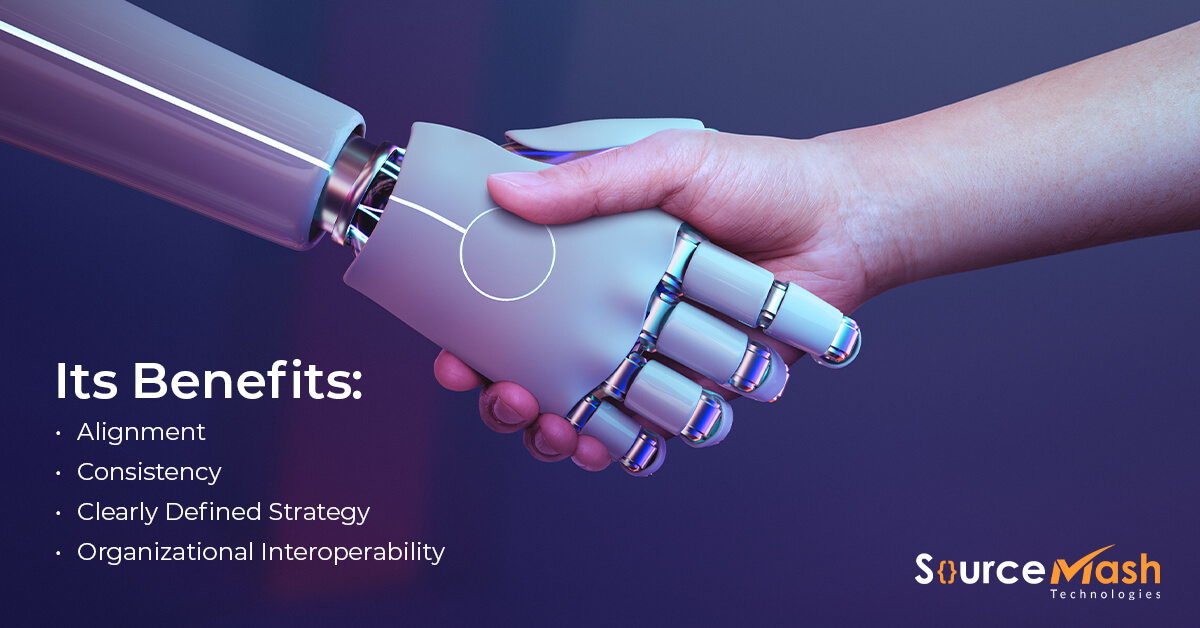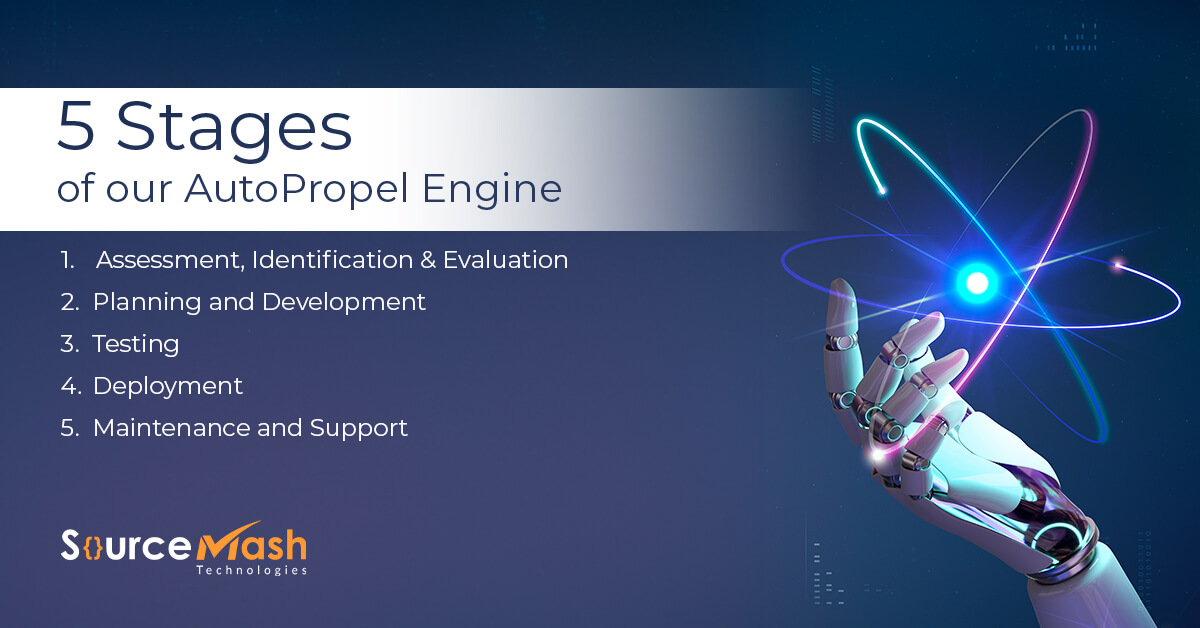Organizations are increasingly adopting automation to boost efficiency, reduce overhead, and improve accuracy—market value hit over 500 million in 2022. But automation implantation isn’t an endeavor that should be executed impulsively or arbitrarily. Companies must approach automation initiatives with precision, thought, and targeted intent to achieve success. Rushed and careless implementation has produced a failure rate of greater than 75 percent.
So how can an organization ensure it properly establishes and scales automation for 100 percent success?
Through our AutoPropel engine.

What Is AutoPropel and Its Benefits?
Our AutoPropel engine is an end-to-end strategy unique to an organization to help it automate multiple areas—often enterprise-wide—uniformly and efficiently. The model is a step-by-step process template that can be used to automate each/any area of the enterprise in a controlled manner. The engine can be custom designed for an organization’s unique requirements. It’s referred to as a “engine” because the model process can be used again and again—much like an assembly line used to produce a product.
Our holistic framework guides decision-makers and stakeholders through all phases of an automation initiative and provides many benefits. Four of the most critical are:
- Alignment
The processes and stages involved in automation factory ensure that the organization is aligned with business outcomes throughout every step. - Consistency
Our engine establishes consistency and a common approach across various teams and allows asset sharing, which supports scalability. - Clearly Defined Strategy
A well-planned roadmap ensures that the right problems are targeted and match with the most appropriate tools. - Organizational Interoperability
A dedicated automation model provides synergy between teams as it guards against ad-hoc solutions that cause fragmentation and cannot be scaled.
5 Stages of our AutoPropel Engine

- Assessment, Identification & Evaluation
This is where critical process assessments take place, such as feasibility, business case, and best. It’s also the stage for idea identification, cost-benefit analysis, security approvals, and access approval. Once the assessments are complete, we start analyzing the critical metrics to measure our success and identify any risks. - Planning and Development
Here requirements are reviewed to ensure no critical functions were missed. Test strategies are also developed along with a project tracker, and the project tool may get approved. Code development and design can begin, and the solution can be reviewed for scalability. - Testing
In this stage the code should be complete, and the test plan can be reviewed and tested. Additionally, quality assurance, user acceptance testing and environment is setup, and the bot should have an ID to use within the system like a user. - Deployment
Now it’s time to check production readiness, secure all required approvals, fix bugs, monitor health of automation, and log all action and initial issues. - Maintenance and Support
Finally, the transition to operations team can take place and a review of automation performance for stability. Also, a metrics dashboard and monitoring can be set up.
Organizations that develop a comprehensive automation model can save substantial time, money, and backtracking. A clearly mapped path with checks and balances helps ensure that the automation initiative is on track and is being applied correctly and appropriately.